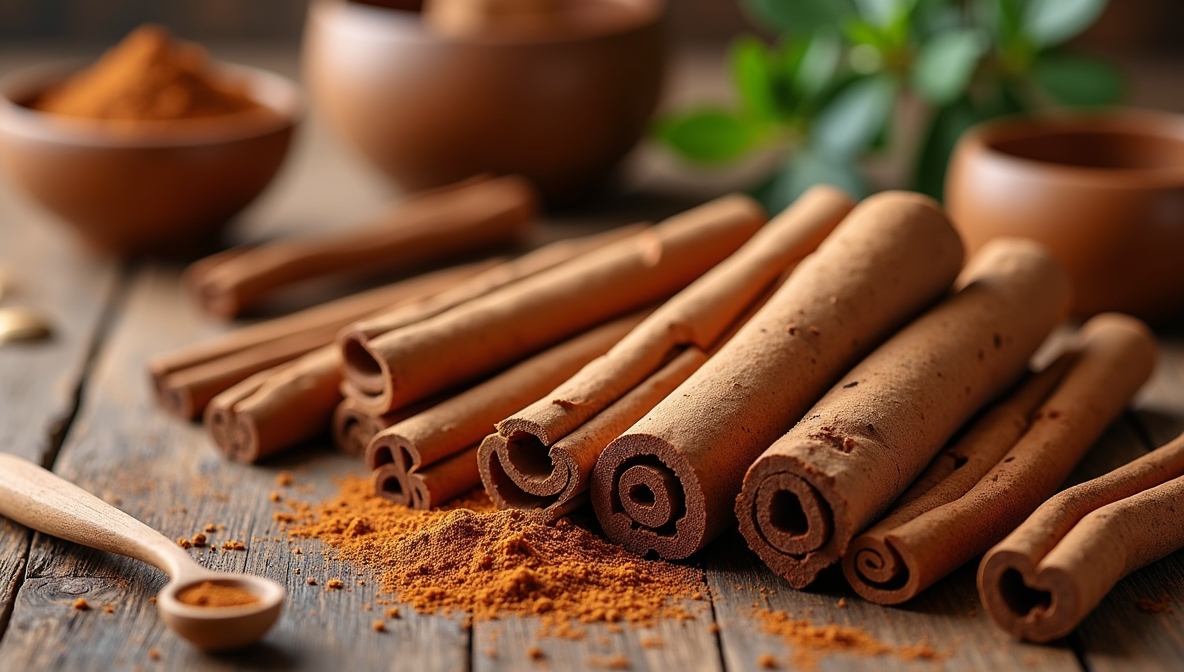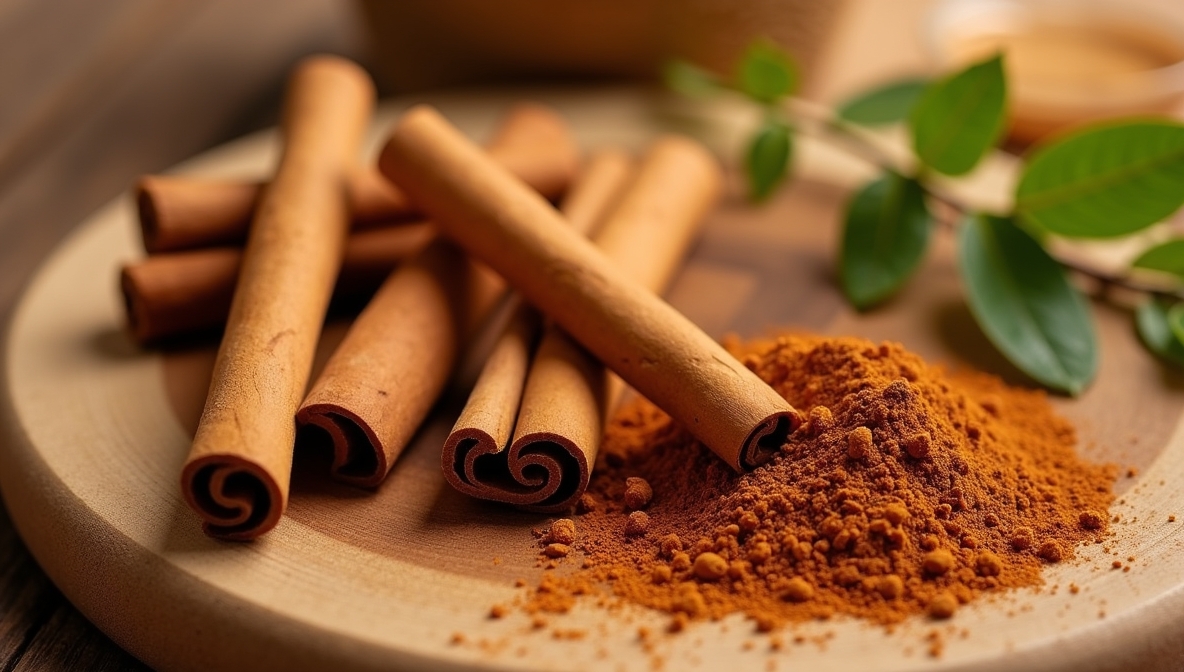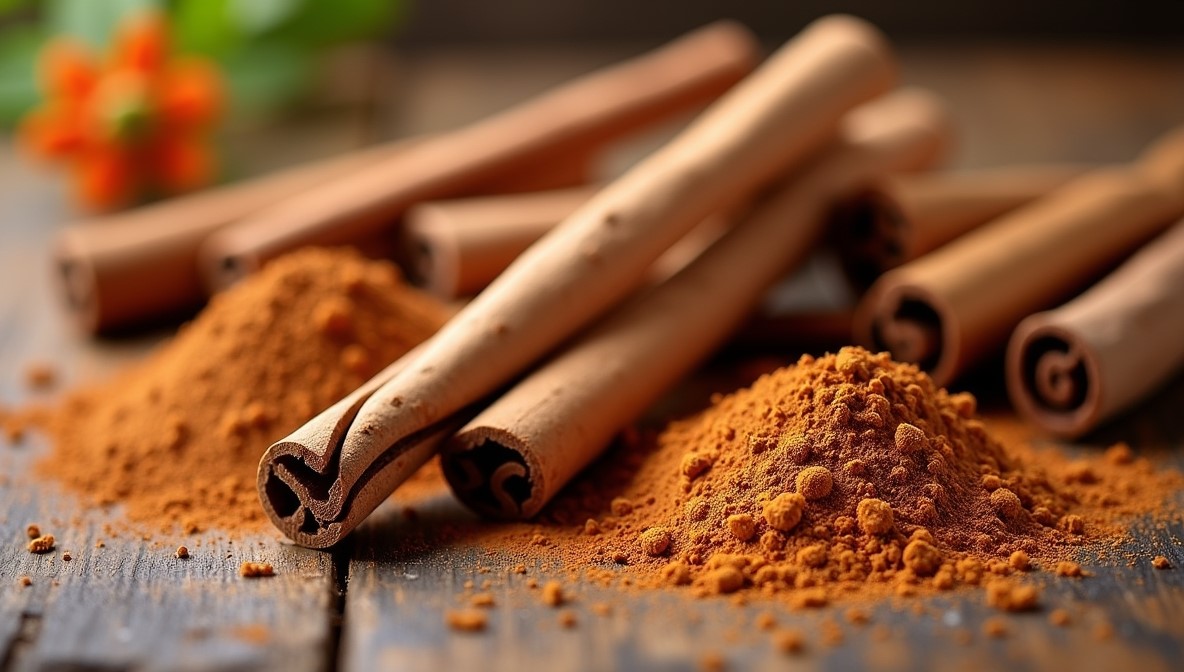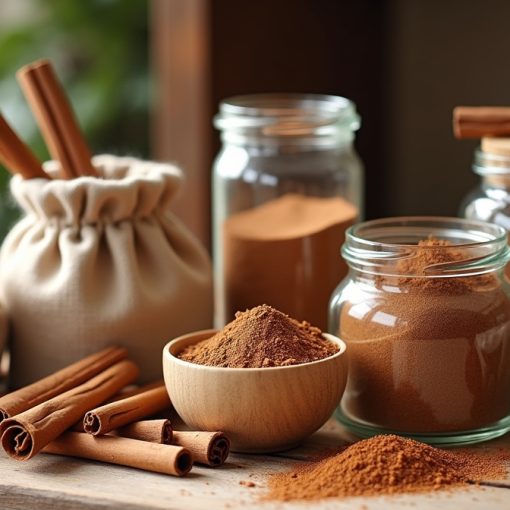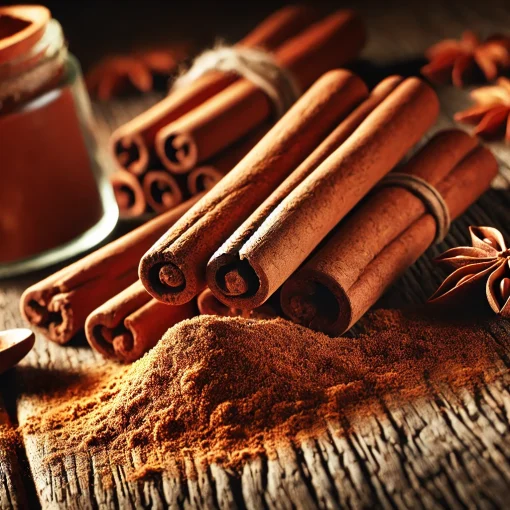Cinnamon isn’t just a single spice—it’s a family of flavors with distinct characteristics. From the rich, bold notes of Cassia to the delicate sweetness of Ceylon, each variety brings something unique to the table. Understanding the differences helps in choosing the right one for cooking, health benefits, and even traditional remedies.
Main Cinnamon Varieties
The four primary types of cinnamon originate from different parts of Asia and vary in taste, aroma, and usage.
1. Ceylon Cinnamon (Cinnamomum verum)
- Also known as: True Cinnamon, Mexican Cinnamon
- Origin: Sri Lanka, India, Madagascar
- Flavor Profile: Mildly sweet, delicate, slightly citrusy
- Appearance: Thin, brittle bark with tightly rolled quills
- Best Used For: Desserts, light spice blends, teas, and delicate dishes
Ceylon cinnamon is known for its subtle complexity. Unlike the stronger varieties, it blends smoothly into dishes without overpowering other flavors. The delicate layers of bark curl inward, making it easy to grind or infuse into liquids.
2. Cassia Cinnamon (Cinnamomum cassia)
- Also known as: Chinese Cinnamon
- Origin: China, Vietnam, Indonesia
- Flavor Profile: Bold, spicy, slightly bitter
- Appearance: Thick, rough bark with a single-layer curl
- Best Used For: Savory dishes, meat rubs, strong spice blends
Cassia cinnamon has a dominant, fiery kick. Its high oil content makes it ideal for strong, spicy flavors. Used in many commercial cinnamon products, it delivers a deep warmth to dishes. Due to its sturdier bark, it’s harder to grind but holds up well in slow-cooked meals.
3. Saigon Cinnamon (Cinnamomum loureiroi)
- Also known as: Vietnamese Cinnamon
- Origin: Vietnam
- Flavor Profile: Extremely aromatic, sweet, intense spice
- Appearance: Dark reddish-brown, thick bark, tightly curled quills
- Best Used For: Baking, coffee, cinnamon-forward dishes
Saigon cinnamon stands out for its high cinnamaldehyde content, which gives it a pronounced aroma and robust sweetness. It provides a strong cinnamon presence in baked goods and beverages, often preferred in cinnamon rolls and spiced coffees.
4. Indonesian Cinnamon (Cinnamomum burmannii)
- Also known as: Korintje Cinnamon
- Origin: Indonesia
- Flavor Profile: Milder than Cassia, slightly woody, sweet
- Appearance: Medium-thick bark, smooth texture
- Best Used For: Everyday cooking, mass-market spice blends
Indonesian cinnamon is commonly found in supermarket spice jars. Milder than Saigon but stronger than Ceylon, it works well in a variety of recipes without overpowering other flavors. Its affordability makes it a popular choice for commercial use.
Comparing Cinnamon Varieties
| Type | Flavor | Best For | Cinnamaldehyde Content |
|---|---|---|---|
| Ceylon | Mild, sweet | Desserts, teas, light dishes | Low |
| Cassia | Bold, spicy | Savory dishes, strong spice blends | High |
| Saigon | Sweet, intense | Baking, coffee, cinnamon-heavy foods | Very High |
| Indonesian | Woody, mild | Everyday cooking, commercial spice blends | Moderate |
Choosing the Right Cinnamon
Each variety serves a purpose. The right choice depends on how it’s used:
- For sweet dishes – Ceylon or Saigon offers the best balance without overpowering other flavors.
- For savory meals – Cassia provides a strong, spicy backbone for meat dishes and curries.
- For everyday use – Indonesian cinnamon works well in general cooking and is widely available.
- For health benefits – Ceylon has the lowest coumarin content, making it the preferred option for regular consumption.
Coumarin Content: What to Know
Coumarin, a natural compound in cinnamon, can have adverse effects in high doses.
- Ceylon Cinnamon – Lowest coumarin levels, safe for regular consumption.
- Cassia, Saigon, and Indonesian Cinnamon – Higher coumarin levels, best used in moderation.
For those using cinnamon for health purposes, Ceylon is the safest option.
Best Ways to Use Cinnamon
1. Cooking & Baking
- Ceylon: Apple pies, custards, spiced teas
- Cassia: Braised meats, barbecue rubs, mulled wine
- Saigon: Cinnamon rolls, spiced cookies, strong lattes
- Indonesian: General spice blends, cereals, oatmeal
2. Beverages
- Ceylon: Delicate herbal teas, infused water
- Cassia: Hot chocolate, chai, spiced coffee
- Saigon: Espresso drinks, cinnamon-spiced cocktails
- Indonesian: Standard cinnamon-flavored drinks
3. Traditional & Alternative Uses
- Aromatherapy: Saigon and Cassia for strong, warming scents
- Health & Wellness: Ceylon for daily consumption, low in coumarin
- Preservation: Cassia and Indonesian cinnamon for pickling and curing meats
Storage Tips
Cinnamon retains its potency best when stored properly:
- Whole sticks: Keep in an airtight container away from heat and moisture.
- Ground cinnamon: Store in a cool, dark place, using within six months for maximum flavor.
- Freezing: Not necessary but can help extend shelf life in humid climates.
Final Thoughts
Choosing the right cinnamon variety can elevate flavors and bring out the best in any dish. Whether it’s the delicate sweetness of Ceylon, the bold spice of Cassia, or the intense kick of Saigon, each type has its place in the kitchen. Understanding their differences ensures the best results, whether for cooking, baking, or health-conscious use.
